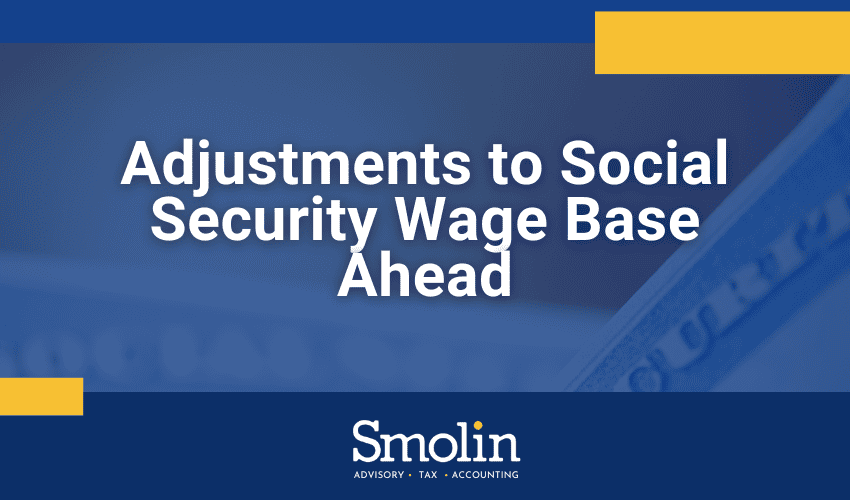
Written by Michael A. DiMayo, CFP, CLU, ChFC & Kevin E. Myers, CPA, M.S. Taxation
Principals of Oxford Risk Management Group, Michael A. DiMayo, CFP, CLU, ChFC and Kevin E. Myers, CPA, MS, explain the key industry considerations for CPAs
Anyone interested in captives is probably aware by now that captive insurance companies made the IRS “Dirty Dozen” list posted last year for the 2015 filing season. The IRS noted that captives are “a legitimate tax structure involving certain small or micro captive insurance companies”. It is important to understand and to become familiar with the reasons why captives made this list in order to partner with a reputable and compliant captive manager who can help you to form a legitimate, bonafide insurance company, avoiding “Dirty Dozen” status. Such a captive manager will help you to form and manage a captive insurance company to fit within the guidelines to qualify as a legitimate tax structure, rather than to find yourself within an abusive structure and under IRS scrutiny.
When IRC § 831(b) was enacted, it was intended to allow small- to mid-sized companies to quickly and effectively build up a sizeable amount of capital to help pay claims. Section 831(b) allows a company to pay income tax only on the captive investment income, provided gross annual premiums are $1.2m or less. The IRS has become suspicious that some 831(b) captives are currently being formed predominantly for non-insurance reasons (i.e., solely to save money on taxes), hence their place on the “Dirty Dozen” list. This has resulted in the IRS conducting “promoter” audits, which target potentially abusive arrangements that pay little attention to the insurance aspects behind the transaction.
Forming a captive insurance company does not guarantee you an audit by the IRS. The IRS is currently targeting promoters who are abusing the legitimate structure of captives by promoting the tax benefits of captives and ignoring the risk management function. These abusive structures typically lack business purpose, contain poorly and carelessly drafted policies, with little to no underwriting, feasibility study or independent third-party risk management review, are often written for improbable risks (such as hurricane insurance in Nebraska) and contain pooling arrangements designed to generate few, if any, claims. By engaging with a compliant captive manager, a captive can be properly structured with the necessary documentation of business purpose and managed as a true insurance company to support your case in the event a random IRS audit does occur.
Insurance Risk
Areas which the IRS seems to consistently address during its examinations include insurance risk and the common notions of insurance, risk shifting, risk distribution and business purpose. IRC § 816(a) defines an insurance company as a company in which more than half of the business is through the issuance of insurance contracts or the reinsuring of risks underwritten by insurance companies. “Insurance” is not specifically defined in the Internal Revenue Code so case law typically sets the precedent to define the common notion of insurance. Two factors required to be present to be considered insurance in the commonly accepted sense are risk shifting and risk distribution. In addition, the company must look and act like a true insurance company. This is typically determined by ensuring the company is organized and regulated by a state regulatory authority, contains valid policies with reasonably priced premiums, payment of claims and is adequately capitalized.
Business Purpose
An initial feasibility analysis should be performed to ensure a captive insurance program is appropriate for the operating company and an adequate underwriting process should be in place to identify the appropriate risks for the company. Through the underwriting process, the operating company should thoroughly identify and evaluate the risks that it faces within its industry and should make a management decision whether it wants to transfer or retain those risks. This decision should be made by managers who are knowledgeable about the organization’s operations and risk profile.
Risk Management Objective
Every effort should be made to conduct the undertaking as part of an overall risk management program for the insured enterprise. This process should include a thorough review of all existing policies in the client’s property and casualty portfolio and, whenever possible, consultation with the incumbent property and casualty insurance broker familiar with the client’s program. It is also helpful to seek review from an independent risk management consultant to obtain further validation of the various coverages to be potentially included in a policy issued by the captive.
Premium Pricing
Insurable risks should be reasonably priced, using an appropriate actuarial method. It is vital to obtain accurate pricing through independent, third-party, credentialed actuaries who use pricing methodologies that are accepted within their industry, with results confirmed via objective, peer-reviewed scrutiny. It is critically important to work with a reputable captive provider who can provide adequate underwriting and actuarial substantiation to support the pricing and coverages offered under the captive insurance policy. The captive manager should also maintain adequate documentation and notes that support the pricing of the captive and should have this documentation readily available in the event of an audit.
Captives for Estate Planning
The IRS is currently concerned with captives formed for estate planning purposes. The IRS alleges abuse in two areas in connection with 831(b) captives and estate planning. One area is purchasing life insurance with captive assets, allowing a business owner to indirectly purchase life insurance with pre-tax dollars. The second area is owning the captive via an irrevocable trust outside of the estate of the insured business owner, allowing a business owner to transfer wealth through the insurance company surplus to avoid estate tax. The captive industry is expecting further guidance from the IRS in the near future regarding these two areas.
Recent Tax Court Cases
During 2015, the Tax Court ruled in favor of the taxpayer, RVI Guaranty, and held that certain residual value insurance contracts, which insured against a market drop in the value of certain leased property, were insurance for federal income tax purposes. The Tax Court found the policies satisfied all major tax requirements to be considered insurance: risk shifting, risk distribution, and the common notion of insurance. The court concluded that while the residual value insurance policies are not the typical insurance policies, they do constitute insurance contracts for tax purposes. This case is notable to the captive insurance industry since Tax Court cases that clarify what is insurance for income tax purposes are uncommon. This case provides significant precedential value to the captive insurance industry.
Current Pending Legislation
During early 2015, the Senate Finance Committee introduced a bill to amend the Internal Revenue Code Section 831(b) to increase the tax-exempt premium limitation from $1.2m to $2.2m, with inflation adjustments for future years. An earlier version of the bill limited the percentage of premium from a single policyholder to 20%, but this version of the bill was dismissed. The current bill requires the Department of the Treasury to submit to the Senate Finance Committee a report on the abuse of captive insurance companies for estate planning purposes and to include legislative recommendations for addressing such abuses. This report is due on February 11, 2016. The current speculation within the captive industry suggests changes may be in the pipeline with regards to trust ownership of captives and disallowing life insurance to be held inside a captive.
Observations
In light of recent Tax Court guidance, clients are well advised to seek input from independent advisors throughout the risk management review process. Selecting an appropriate domicile for the captive is also of paramount importance as taxing authorities will tend to favor an arrangement which has been scrutinized and been subject to oversight by reputable insurance regulators. It is also crucial for the independent auditors’ report to reflect consensus in the opinion that the structure is indeed believed to operate as a legitimate insurance entity in all respects. In conclusion, it is imperative to partner with a reputable, compliant captive manager to help form and maintain a legitimate captive, as well as to provide ongoing documentation retention in the event of an IRS audit.
Michael A. DiMayo is co-founder of Oxford Risk Management Group and Affiliates, with management responsibilities including marketing, strategic relationship development and best practice initiatives. Mike has extensive experience in all aspects of the captive insurance industry with emphasis on design, implementation, ongoing management and regulatory oversight for Oxford’s captive clients.
Kevin E. Myers is co-founder of Oxford Risk Management Group and Affiliates, and is the internal Certified Public Accountant and Tax Advisor for Oxford Risk Management Group and Affiliates. Kevin has extensive experience in structuring captive insurance companies with respect to Internal Revenue Code Section 831(b) and related tax compliance and research for corporate, individual and non-profit clients.





